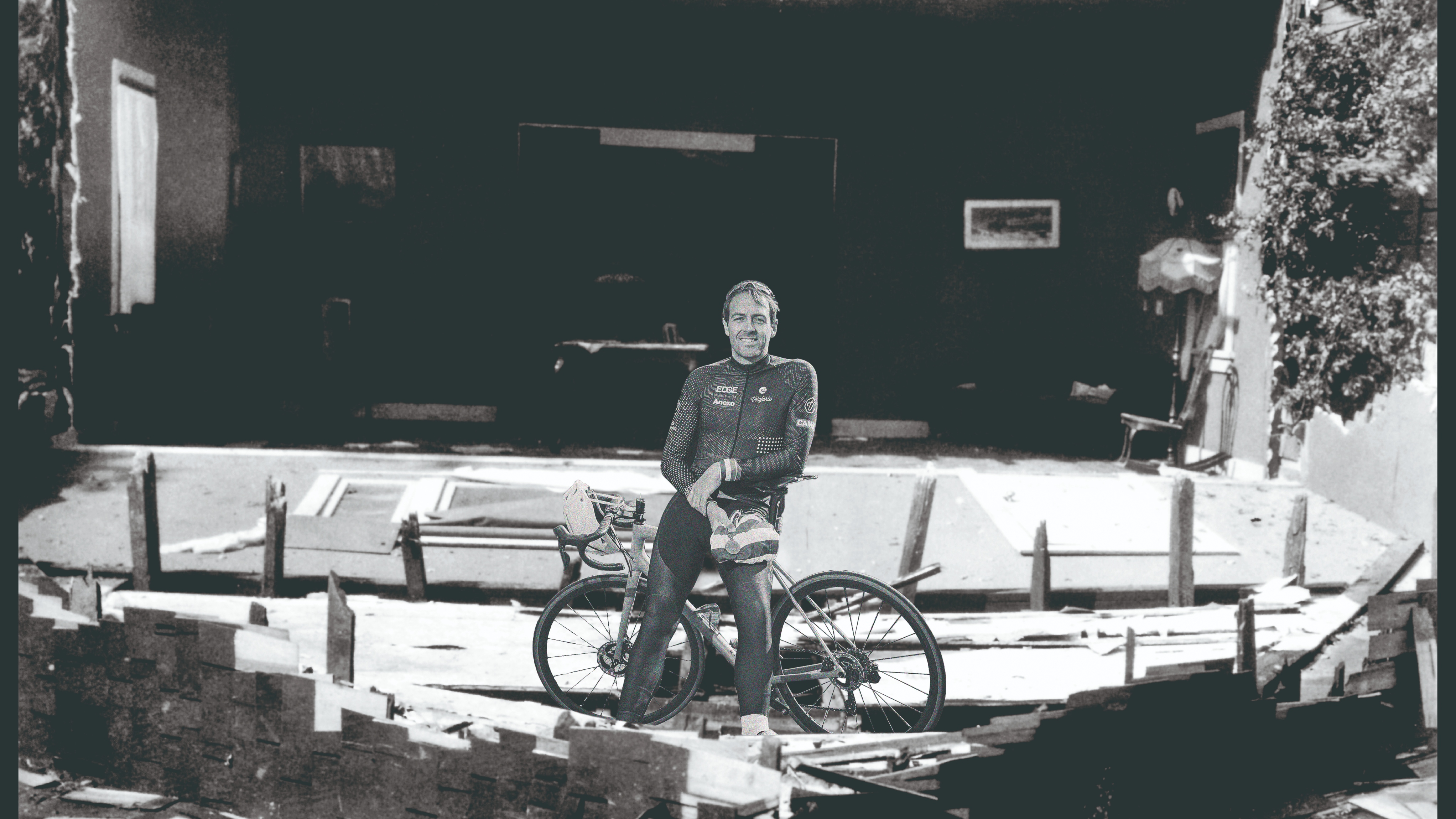Identifying the rider who will get a lot of punctures is just as valuable a skill as anticipating a crash
A sixth sense for avoiding crashes is useful, observes CW's columnist, but so is an intuition for spotting spongers and puncture-prone clubmates

Former World-Tour pro Alex Dowsett recently uploaded a video to his Instagram feed, from his ride in the Portsdown Classic road race. As the first race of the season, the event is a valuable chance to test your legs, and get an early crash in. And so it was.
With a GoPro front and rear, Alex filmed the full panoramic experience as a good dozen or so riders went down. What was interesting was that Alex didn’t. He was left standing upright in the middle of the melee, with riders on the deck in front and behind and on both sides. It was like watching Buster Keaton standing deadpan in the window-opening as the collapsing house gable fell around him.

Michael Hutchinson is a writer, journalist and former professional cyclist. His Dr Hutch columns appears in every issue of Cycling Weekly magazine.
Partly luck, obviously. But also, I think, partly a product of a lot of racing kilometres over a long career. If you only race a few weekends during the season, riding in a tight bunch takes up a lot of your processing power. If you’ve been used to 70 race days a year for years on end, in races probably 50% longer, it takes up less. So you’ve got more capacity for absorbing details.
Put it this way, if I’d been riding beside him, I’d have crashed because my first inkling of doom would be seeing someone on the floor in front of me, and by then I’d have been committed. I think Alex’s first alarm bell went when he saw a gap that a couple of people had ridden through start to close up, and he realised that whatever happened next was going to involve two people trying to share the same bit of road. It’s like being able to see very fractionally into the future. Even a fifth of a second is enough to start implementing urgent plans for not breaking a collarbone in the opening race of the season.
The more you’ve seen, the more you can see. I had crashes early in my career where the first thing I knew was hearing an unexplained bang and noticing that the ground and the sky were the wrong way round. I suffered later crashes where I could have drawn you a frame-by-frame animation that would have been accurate enough for the commissaires to use for VAR purposes. But I didn’t race enough to achieve World Tour levels of clairvoyance and see the crash before it had arrived.
Even if you’re not a World Tour pro, you probably have similar skills. It’s just a question of the things you care most about. My friend Bernard can spot the person who’ll try to shirk paying for their cake at the café as soon as they roll up to the club run meeting point. "It’s the way they stand over their bike," he says. This is because he cares about being stung for a slice of Bakewell tart the way Alex Dowsett cares about falling off.
And if you care most about standing around waiting, you will learn to identify a rider who will a) get a lot of punctures and b) be unable to fix any of them without a pit crew. This is easy to do in the early months of the year – it’s anyone without gloves. But the wise old bird can still do it in July, on pure instinct.
Get The Leadout Newsletter
The latest race content, interviews, features, reviews and expert buying guides, direct to your inbox!
A World Tour pro might be able to see a fraction of a second into the future to avoid a crash, but maybe your equally valuable gift is seeing two hours into the future to avoid standing on a muddy verge for twenty minutes while someone puts an inner tube – most likely your inner tube – into a tyre from which they haven’t remembered to remove the big sharp thorn. That’s at least as valuable an ability.
How to... comment

If you ever see a video on social media of a cycling incident or accident, remember it is your sacred duty to comment on it. If the world didn’t want your opinion, the world would not have provided a box for you to put it in.
The less you know about the incident, the more vigorous should be your editorial observations. Don’t make the mistake of watching the video more than once – a skilled commenter can make incisive interventions based on nothing other than the opening still and the previous, much too tolerant, comments.
If the incident is a collision, explain how you would have avoided it by a detailed analysis of factors like the stupidity of absolutely everyone involved, other than the person who is actually stupid. For instance, only a moron can’t tell when a driver is going to pull out by observing the make and colour of their car or shirt or beard or all three.
It’s easy for others to avoid collisions by means of disobeying the laws of physics. If I say "Inertia" you say, "That’s a conspiracy theory – they could have stopped from 20 mph in the inch-and-a-half required." If I say, "Thinking time," you say, "What’s thinking?"
The objectives of commenting are to teach people what they did wrong, how much they deserved their misfortune, what a regrettable subset of humanity they fall into, and that on the internet reasonableness is for losers.

Thank you for reading 20 articles this month* Join now for unlimited access
Enjoy your first month for just £1 / $1 / €1
*Read 5 free articles per month without a subscription

Join now for unlimited access
Try first month for just £1 / $1 / €1
Michael Hutchinson is a writer, journalist and former professional cyclist. As a rider he won multiple national titles in both Britain and Ireland and competed at the World Championships and the Commonwealth Games. He was a three-time Brompton folding-bike World Champion, and once hit 73 mph riding down a hill in Wales. His Dr Hutch columns appears in every issue of Cycling Weekly magazine
-
 Gear up for your best summer of riding – Balfe's Bikes has up to 54% off Bontrager shoes, helmets, lights and much more
Gear up for your best summer of riding – Balfe's Bikes has up to 54% off Bontrager shoes, helmets, lights and much moreSupported It's not just Bontrager, Balfe's has a huge selection of discounted kit from the best cycling brands including Trek, Specialized, Giant and Castelli all with big reductions
By Paul Brett
-
 7-Eleven returns to the peloton for one day only at Liège-Bastogne-Liège
7-Eleven returns to the peloton for one day only at Liège-Bastogne-LiègeUno-X Mobility to rebrand as 7-Eleven for Sunday's Monument to pay tribute to iconic American team from the 1980s
By Tom Thewlis